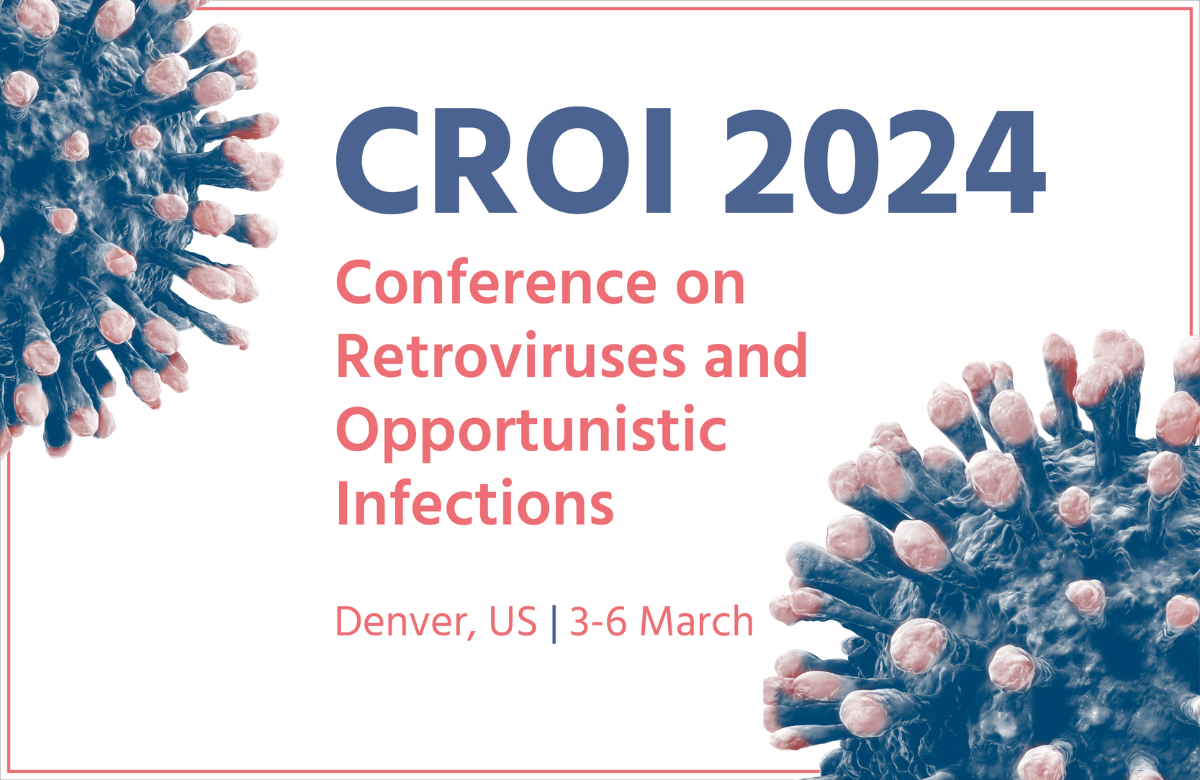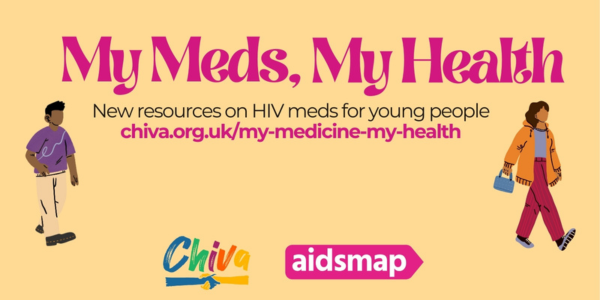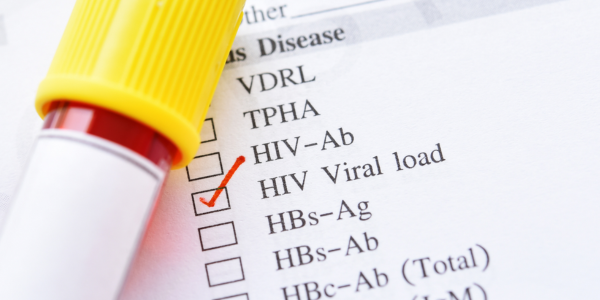Having problems reading this email? View it in your browser >>
|
||
 |
||
|
||
Contents
|
||
News from CROI 2024 | ||
 | ||
|
From 3 to 6 March, HIV experts and researchers from all over the world came together to discuss the latest HIV developments at the 31st Conference on Retroviruses and Opportunistic Infections (CROI 2024) in Denver, US. Read on to find out more about the conference highlights which are likely to have the greatest impact on the health care of people living with HIV in the UK and other countries with similar health services. | ||
Long-acting HIV treatment | ||
 carballo/Shutterstock.com | ||
|
Currently, most HIV treatments need to be taken daily. Some people with HIV can find this difficult because, for example, they find it hard to remember to take their medication daily or because they don’t like being reminded of having HIV every day. Researchers at CROI 2024 presented multiple studies that looked at long-acting HIV treatments – these are treatments you have to take less frequently because they last in the body for longer. They might be a good option for people who find it difficult to take daily medication. Currently there’s only one complete long-acting regimen: cabotegravir / rilpivirine, taken as an injection every month or every two months. That means there’s not much choice for people who prefer long-acting treatments. | ||
|
Phase I studies on weekly oral treatments Researchers presented results from two phase I studies looking at new drugs that are taken as pills once a week. Phase I studies are the first hurdle for new treatments – much more research is needed to find out how well the drugs work and how safe they are. One of the potential new drugs is called MK-8527. It’s a new type of drug called a nucleoside reverse transcriptase translocation inhibitor. The second potential new drug that was tested is called GS-1720. It’s an integrase inhibitor, which means it stops HIV from hiding itself deeper in cells. Both drugs showed promising results. But much bigger studies are now needed to confirm if they’re good candidates for long-acting HIV treatment that can be taken only once a week. | ||
|
Phase II studies on weekly oral treatments Results were also presented for a weekly treatment regime with islatravir and lenacapavir. The trial is a small phase II study, which means it’s slightly further ahead in the clinical trial process. Lenacapavir is also a new type of drug – a capsid inhibitor – and is already available as injection for people who have limited treatment options. While the injection is given only every six months, it currently needs to be taken with daily pills. The second drug, islatravir, belongs to the same new drug class as MK-8527. The results show that the majority of people (94%) who switched to taking islatravir and lenacapavir once a week continued to be virally suppressed. The researchers concluded that islatravir plus lenacapavir “has the potential to become the first weekly oral complete regimen for the treatment of HIV”. | ||
|
Ultra-long-acting injectable medication Researchers at CROI 2024 also presented data from a phase I study that looked at ultra-long-acting cabotegravir. They found that injecting the new ultra-long-acting formulation every four months created the same drug levels in the body as the currently approved formulation that is injected every two months. This new formulation could eventually be used as PrEP to prevent HIV infection and also as treatment – if it could be paired with a second, equally long-acting drug. | ||
New resources for young people
Last week, alongside Chiva, we were delighted to launch a new set of resources – a booklet, factsheets, and animated videos – about HIV medication for children and young people living with HIV. People who live with HIV usually take medication every day. However, taking daily medication can be difficult and young people often need support. That's why we worked with Chiva, as well as a group of young people living with HIV and health experts, to produce these new resources. You can find them all on the Chiva website and on aidsmap.com. | ||
Viral suppression in children who stop treatment | ||
 Dr Deborah Persaud at CROI 2024. Photo by Roger Pebody. | ||
|
A small number of children who start HIV treatment within the first two days of life may be able to control their HIV after stopping their HIV treatment. While these promising findings hold clues for HIV cure research, such early therapy is out of reach for many, and interrupting HIV treatment is risky without careful monitoring by your medical team. | ||
Preventing heart disease with statins in women with HIV | ||
 Mareike Günsche | www.aspect-us.com | ||
|
The risk of heart disease – for example heart attack, strokes and high blood pressure – is higher in people with HIV compared to people without HIV. In people without HIV, women typically have a lower risk for heart disease than men. But a new study showed that women living with HIV don’t seem to have a lower risk for heart disease than men living with HIV. Last summer an important study called REPRIEVE reported its results on whether statins help reduce heart disease risk in people with HIV. Statins are a type of treatment used to lower cholesterol (blood fats). The researchers found that statins reduced the risk of heart attack and stroke by around 35%. They work equally well in women and men with HIV. But the researchers were now surprised to see an unexpectedly high level of heart disease risk in women with HIV, especially in high-income countries. Based on risk factors like high cholesterol and blood pressure, the researchers expected women to have less heart disease than men. But when they looked at the actual numbers of events connected to heart disease, like heart attacks or strokes, they found that women actually had a higher number than expected. Especially in high-income countries, like the UK, the estimated risk score under-predicted the rate of heart disease. Based on these findings, the researchers recommend that women with HIV should receive better advice about their risk for heart disease and the benefits of statin therapy. New guidelines in the UK recommend that all people with HIV over the age of 40 should be offered a statin to reduce the risk of heart disease. It’s also important to discuss potential symptoms of heart disease with your healthcare team. These symptoms may differ in women. Shortness of breath, nausea, vomiting and back or jaw pain are more common symptoms in women but are often missed. If you’re worried about your risk for heart disease, or if you want to discuss if statins might be suitable for you, we recommend you speak to a member of your healthcare team. | ||
Ten safer-breastfeeding rules
In the UK, the British HIV Association (BHIVA) recommends that you feed your infant with formula if you’re living with HIV. However, some people do decide to breastfeed, for a variety of reasons. Read our ten rules for safer breastfeeding for people living with HIV on aidsmap.com. | ||
Semaglutide for fatty liver disease and inflammation in people with HIV | ||
 Dr Jordan Lake at CROI 2024. Photo by Roger Pebody. | ||
|
Semaglutide (Wegovy) is best known as a weight-loss medication. Previously, most research into semaglutide had been done with people without HIV. But researchers at CROI 2024 now presented findings that semaglutide also leads to significant weight loss among people with HIV (an average of 6.5kg, or about 6% of body weight) over one year. Researchers at CROI 2024 also shared findings that show that semaglutide may also be used to treat a liver condition and inflammation in people with HIV. Metabolic dysfunction-associated steatotic liver disease (MASLD) is a condition that causes a build-up of fat in the liver. That’s why it’s also called fatty liver disease. Over time, it can lead to inflammation, scarring of the liver and liver cancer. Fatty liver disease is common in people living with HIV. There are currently no approved medications for fatty liver disease. It’s usually managed with lifestyle changes such as weight loss and exercise. Recent studies have shown than semaglutide reduces the risk of cardiovascular events and kidney disease progression in people without HIV, but not much research had been done in people living with HIV. Researchers from the SLIM LIVER trial found that semaglutide taken for six months reduced liver fat by 31% and that semaglutide was generally well tolerated. The researchers concluded it’s a safe and effective therapy for fatty liver disease in people with HIV. However, fatty liver disease in people living with HIV is still not fully understood. The researchers think that people with HIV may have some risk factors for fatty liver disease that people without HIV don’t have. That’s why semaglutide may have unique benefits for people with HIV. One of those benefits may be reduced inflammation and activation of the immune system. Inflammation is the body’s response to injury and infection. People with HIV are more likely to experience inflammation that persists over a long time. This type of chronic inflammation can increase the risk for conditions such as heart disease or cancer. A team of researchers found that people who took semaglutide had lower levels of certain inflammation and immune activation markers in the blood that are linked to heart disease. This decrease wasn't just caused by weight loss, suggesting semaglutide might have other positive effects on inflammation in people living with HIV. In the past, most studies on semaglutide did not include people living with HIV. That’s why these new findings are so important. More research is needed to be sure how people with HIV may benefit from the medication. If you’re feeling worried about your weight, blood pressure or the health of your liver, you can reach out to a member of your healthcare team. | ||
Viral load logs
A viral load result is usually described in terms of the number of HIV RNA copies per millilitre of blood (copies/ml). Because the actual copy numbers can span up to the hundreds of thousands and millions before treatment, a 'logarithmic scale' (logs of 10) can be used as a measurement. Find out more in our page on aidsmap.com. | ||
Reducing risk of sexually transmitted infections with antibiotics | ||
 Professor Annie Luetkemeyer and Dr Hyman Scott at CROI 2024. Photo by Liz Highleyman. | ||
|
DoxyPEP stands for doxycycline post-exposure prophylaxis. It means taking an antibiotic after having sex to reduce the risk of getting a sexually transmitted infection (STI). It’s a bit like a morning-after pill for STIs. In October 2022, San Francisco was the first city to recommend doxyPEP, for gay and bisexual men and transgender people. Since then, multiple studies using real-world data and a clinical trial in San Francisco have shown that doxyPEP is an effective way to reduce STI rates. A doxyPEP trial in San Francisco and Seattle enrolled more than 500 gay and bisexual men and transgender women who were either living with HIV or taking PrEP. They were divided into two groups at random: one group that received doxyPEP and one group that received standard care (the control group). In 2022, the researchers first reported that in HIV-positive people who took doxyPEP after sex, there was a 74% reduction in chlamydia, a 77% decrease in syphilis and a 57% reduction in gonorrhoea per quarter compared with standard care. Among HIV-negative participants on PrEP, the corresponding risk reductions were 88%, 87% and 55%. At this year’s CROI, the researchers shared that STI risk reduction was maintained among participants initially assigned to doxyPEP. Because the results were so positive, the participants who hadn’t received doxyPEP yet because they were in the control group, were also offered doxyPEP . After receiving doxyPEP, STIs decreased sharply even though their number of sex partners and condomless sex acts doubled in the short term. Researchers in San Francisco also looked at real-world data for doxyPEP. They analysed data from a sexual health clinic, where doxyPEP has been offered to around 3000 people who use PrEP. The researchers saw a steady increase in doxyPEP use, reaching 1209 people (39% of all PrEP users) by September 2023. This shows a high demand for doxyPEP. Among people who started doxyPEP, overall STI incidence fell from 18% to 8%. That means the number STI cases were cut in half – that’s a very impressive improvement! Similar to the clinical trials, the decrease was greater for chlamydia and early syphilis than for gonorrhoea. Researchers found a similar trend when they looked at the uptake of doxyPEP and STI cases at three large sexual health clinics in San Francisco. The number of cases of chlamydia and early syphilis was cut in half. Even after 13 months of follow-up, chlamydia and syphilis rates were still going down. But again, there was no significant change in gonorrhoea cases, which might be related to drug resistance. Taken together, these studies provide a solid body of evidence that doxyPEP is an effective intervention for reducing new cases of chlamydia and syphilis, though it is considerably less effective – if at all – against gonorrhoea. | ||
Editors' picks from other sources | ||
Tools underestimate cardiovascular event risk in people with HIV | National Institute of Allergy and Infectious DiseaseThe elevated cardiovascular disease risk among people with HIV is even greater than predicted by a standard risk calculator in several groups, including Black people and cisgender women, according to analyses from a large international clinical trial primarily funded by the National institutes of Health and presented at CROI 2024. 5 years after an HIV cure: 'London patient' and his physician look forward – and back | TheBodyProAt CROI 2024, Terri Wilder sat down with Adam Castillejo, the second person cured of HIV, and the researcher who led the study demonstrating his success, Dr Ravi Gupta. People living with and at risk of acquiring HIV in Northern Ireland deserve equal protection from discrimination | National AIDS TrustThe UK should be proud of much of our equality legislation, which is designed to protect individuals from discrimination. However, these laws do not apply equally throughout the whole of the UK. Vaginal ring and oral pre-exposure prophylaxis found safe for HIV prevention throughout pregnancy | National Institute of Allergy and Infectious DiseaseThe monthly dapivirine vaginal ring and daily oral pre-exposure prophylaxis (PrEP) with tenofovir disoproxil fumarate and emtricitabine were each found to be safe for HIV prevention among cisgender women who started using one of them in their second trimester of pregnancy, according to findings presented at CROI 2024. | ||
Connect with us |
||
|
aidsmap is an award-winning, community-based organisation, which works from the UK. We deliver reliable and accurate HIV information across the world to HIV-positive people and to the professionals who treat, support and care for them.
NAM Publications
Cally Yard, 439 Caledonian Road, London N7 9BG Company limited by guarantee. Registered in England & Wales, number: 2707596 Registered charity, number: 1011220 To unsubscribe please click here Privacy Policy: www.aidsmap.com/about-us/confidentiality |